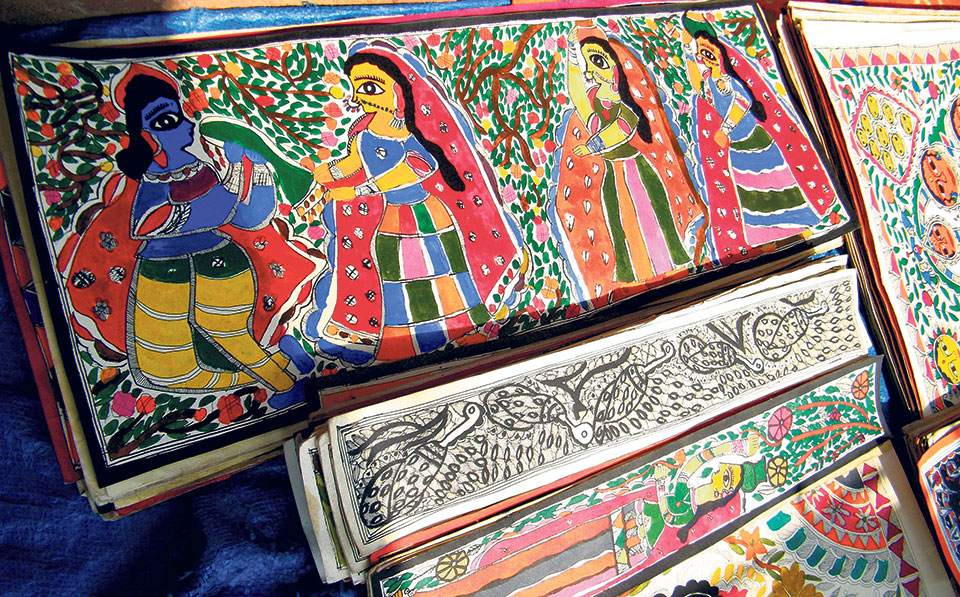Temple dance in Terai
4 years ago

4 years ago

The government of neighboring country India issued postal stamp on Madhubani-Mithila art in 2000 AD. Now the present government has implemented it. It started publishing and distributing the stamps from April, 2016. This news has encouraged the artists of India and Nepal alike. Such initiation will help to understand its glorious tradition. Its original expression will be maintained in the years to come. The modern age has made possible for artists to see color afresh. It has also endowed their technique with firm and new instruments. Now it is our government’s turn to issue postal stamp on Mithila folk art since it can be handy in attracting the attention of several foreign donors. The governments of Australia, Germany, Denmark and Japan are funding lavishly on its promotion and protection. Save the Children, Japan is also interested in it. The latest development in the field of Mithila Folk Art is very laudable.
The 2015 General Assembly of the United Nations set a total of 17 ambitious goals as the Sustainable Development Goals (SDGs); namely No poverty, No hunger and Gender Equality, among others, to be achieved by the year 2030.Seventeen corresponding logos were designed, each depicting the essence of the desired target. The UN office in Nepal has targeted localizing the logos. In the beginning, the logos have been translated into Mithila arts to promote indigenous art practices. It is a welcome start. These 17 new logos have been designed by a dozen artists from the Janakpur Women Development Centre. It will definitely help to establish a Mithila museum in Nepal in the near future.
Mithila folk art depicts women as compassionate and nurturing, but also frightful and demonic. The paintings of Parvati and Lakshmi show women as mother Goddesses and fertility spirits, while images of such wrathful legends as the black goddess Kali, the Devourer of Time and the powerful goddess Durga portray a more fearful image of women.
Maithil women have been scholars and artists from the time immemorial. Matreyi and Gargi were internationally renowned philosophers where as Sita herself was fond of arts, music, paintings and poetry. She has been the perennial source of inspiration and imagination for world famous poets like Valmiki, Tulasidas and Bhanubhakta. Maithil women have a fine taste. As in the past, there was no specific school of art where one could learn it. The skills are rather passed on from generation to generation.
Mithila folk art is mainly divided into two major group viz. Bhittichitra and Bhumichitra. Bhitichitra is the kind of Mithila folk art which is drawn on walls and ceilings. Bhumichitra’s main canvas is the floor of house and threshold. So it is drawn and depicted on the floors. This second group of Mithila folk art is known as Aripan or Alpna. The origin of alpna can be traced to the Brahmanpuran. The pioneer poet of Mithila, Vidyapati mentions Aripan in his Padavali. It was in full blossom in the fourteenth century. It is crystal clear that this art has a long tradition to it. Maithil women are expert in drawing this folk art in the courtyard and also on the front doors. It is drawn on different auspicious occasions. So this art is known as a ceremonial art.
We are quite hopeful that Mithila Museum will be established soon in the near future.
Rakesh is the writer of Mithila Folk Art, published by the Nepal Academy of Fine Arts.
Leave A Comment